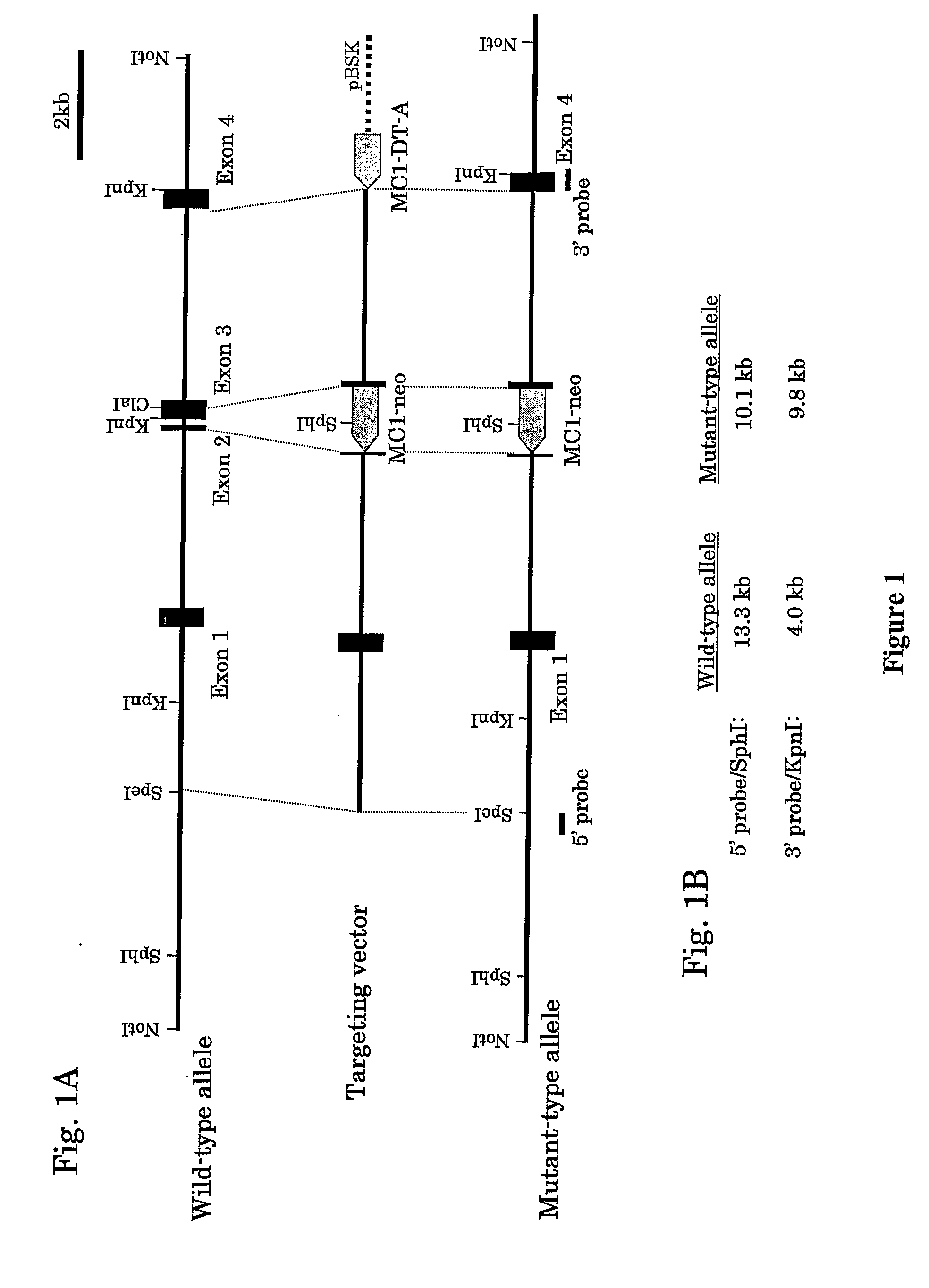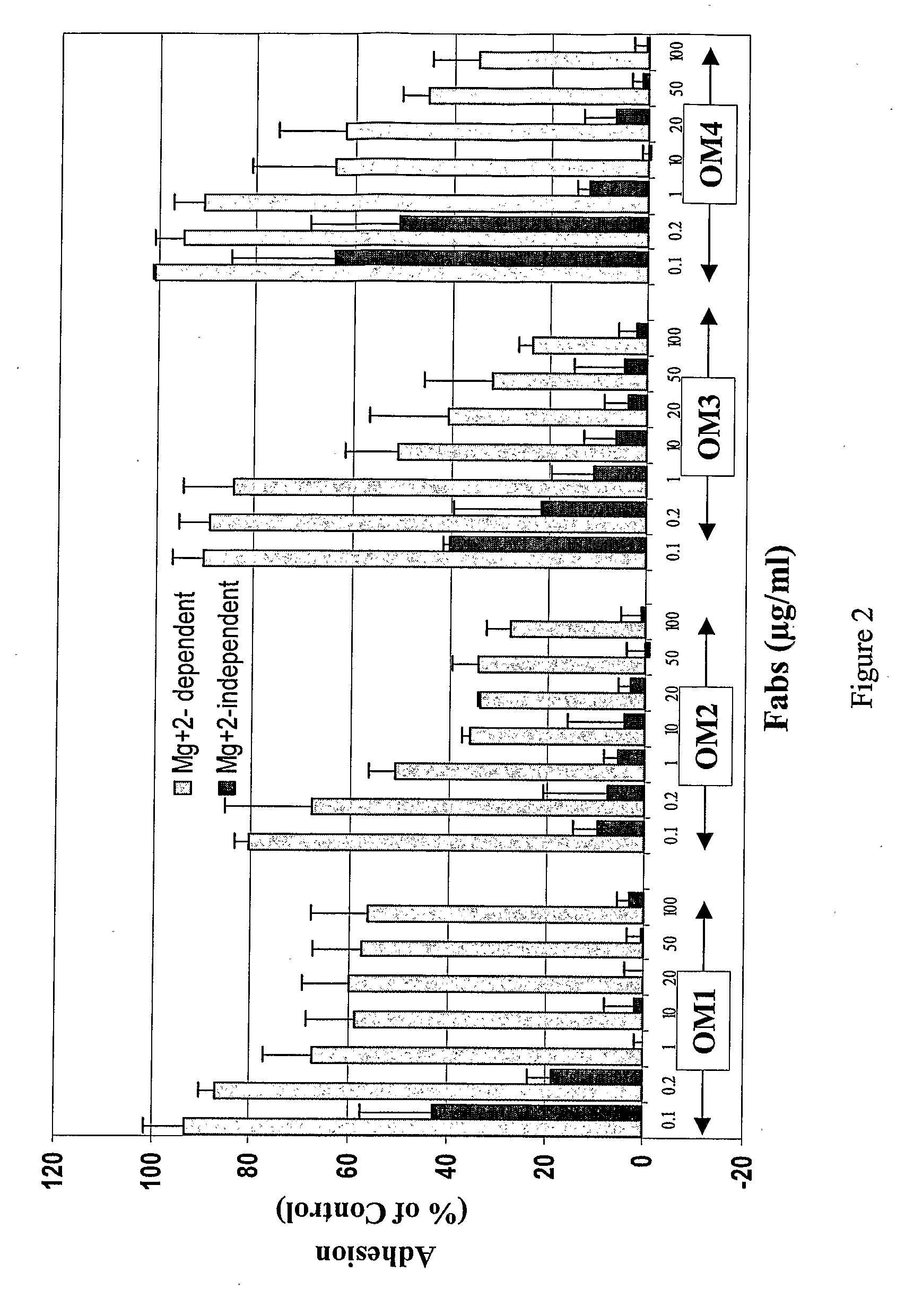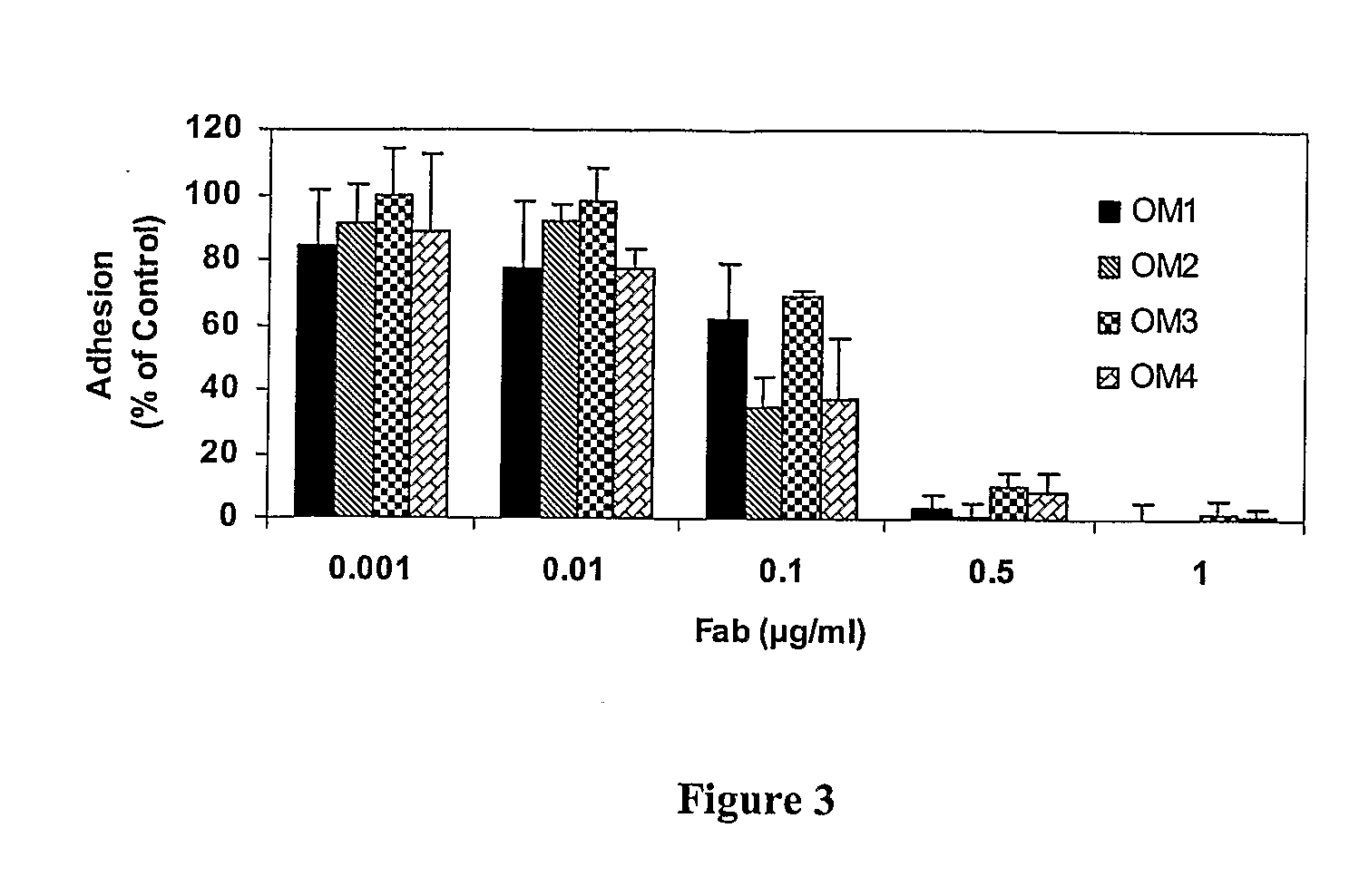Glycoprotein Vi Antibodies and Methods Thereof
a technology of glycoprotein and antibodies, applied in the field of antibodies, can solve the problems of insufficient adhesion stability, damage to vital tissues such as the heart and brain, and reversible process, and achieve the effect of reducing side effects
- Summary
- Abstract
- Description
- Claims
- Application Information
AI Technical Summary
Benefits of technology
Problems solved by technology
Method used
Image
Examples
example 1
Preparation of Monoclonal GPVI Antibodies
[0091] Normal mice (Balb / c, female), Armenian hamsters (male) and GPVI knock-out mice (produced at Otsuka GEN institute) were immunized to produce monoclonal antibodies as described below.
[0092] GPVI knockout mice were generated as previously described (Mori et. al. Neurosci. Res. 43: 251-7, 2002). The targeting vector was constructed by replacing a genomic fragment of the GPVI gene (Ezumi Y. et al., Biochem Biophys Res Comm 277:27-36, 2000) from 129 / Sv mouse genomic λ clones containing the last 5 bases of exon 2 to the first half of exon 3 (Clalsite) with the pMC1-neo-polyA (Stratagene) cassette as shown in FIG. 1A. The linearized construct was electroporated into AB2.2 ES cells derived from 129 / Sv mouse (Lexicon Genetics Inc., The Woodlands, Tex.) and the cells were selected in G-418. G-418-resistant ES cell clones were screened for successful homologous recombination at exons 2 and 3 by probing SphI- or KpnI-digested genomic DNAs with 5′...
example 2
GPVI Specific Antibodies are Potent Inhibitors of Collagen-Induced Platelet Aggregation and Adhesion
[0105] The inhibitory potential of the Fab fragments prepared according to Example 1 was tested on collagen-induced platelet functions, including collagen-induced platelet aggregation and adhesion of platelets to immobilized collagen under static and flow conditions.
[0106] The antibodies were tested for in vitro platelet aggregation as follows. A collagen dosing experiment was first performed to determine the amount of collagen that would give 70-90% platelet aggregation within 5 minutes of its addition because collagen response varies among individuals. Moreover, the type of collagen used in the assays can dramatically affect the response. From experience, acid insoluble equine tendon collagen (Nycomed, Germany) provided the greatest platelet aggregation response. Nieswandt (J. Biol. Chem. 275:23998-24002, 2000, and U.S. Patent Publication No. 2002 / 0141992), Lecut et al. (J. Thromb...
example 3
GPVI Specific Antibodies Inhibit Collagen-Induced Secretion and Thromboxane A2 Formation
[0121] Fab fragments of the GPVI specific antibodies of the invention were also tested for their effect on collagen-induced secretion and thromboxane A2 (TXA2) formation. Secretion refers to agonist-induced release of bioactive contents from alpha and dense granules from platelets.
[0122] One way to quantify agonist-induced release is to measure ATP content in the medium by luciferase assay using chemiluminescence method. Platelet-rich plasma (PRP) was tested for collagen-induced ATP secretion using a Lumi-aggregometer (Chronolog Corporation, PA) and a luciferase-luciferin reagent. The Lumi-aggregometer simultaneously measures the agonist-induced platelet aggregation and ATP secretion. Briefly, human blood was drawn directly into 3.8% trisodium citrate with a syringe (9:1 volume blood:citrate). Platelet-rich plasma (PRP) was prepared by centrifugation at 180×g for 15 minutes. PRP (360 μl) was mi...
PUM
| Property | Measurement | Unit |
|---|---|---|
| Molar density | aaaaa | aaaaa |
| Volume | aaaaa | aaaaa |
| Volume | aaaaa | aaaaa |
Abstract
Description
Claims
Application Information
 Login to View More
Login to View More - R&D
- Intellectual Property
- Life Sciences
- Materials
- Tech Scout
- Unparalleled Data Quality
- Higher Quality Content
- 60% Fewer Hallucinations
Browse by: Latest US Patents, China's latest patents, Technical Efficacy Thesaurus, Application Domain, Technology Topic, Popular Technical Reports.
© 2025 PatSnap. All rights reserved.Legal|Privacy policy|Modern Slavery Act Transparency Statement|Sitemap|About US| Contact US: help@patsnap.com



